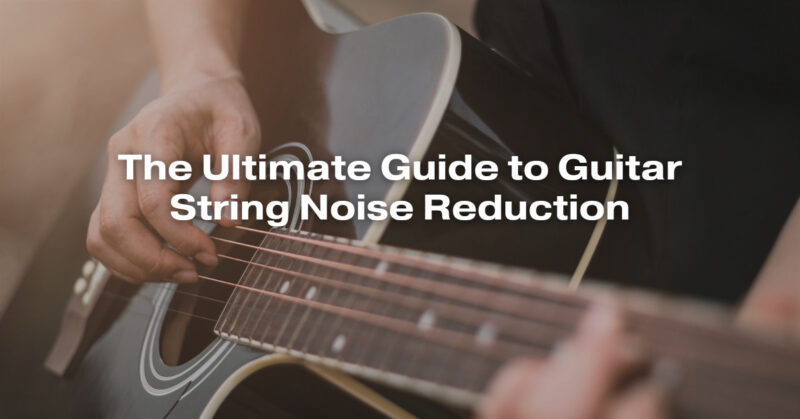Guitar string noise, often referred to as “string squeak” or “string noise,” can be a common issue that guitarists encounter, especially when playing at high speeds or performing techniques like slides, bends, and tapping. While some string noise is inevitable, there are various techniques and tools you can use to reduce it significantly. This ultimate guide to guitar string noise reduction will help you achieve cleaner and more controlled playing:
1. Proper String Winding:
- Ensure that your strings are wound neatly and tightly around the tuning pegs. Loose winding can create excess string noise.
2. Quality Strings:
- Invest in high-quality strings. Premium strings are less prone to creating unwanted noise compared to lower-quality options.
3. String Lubrication:
- Use a graphite or lubricating solution on the nut and bridge saddles. This reduces friction, making string movement smoother and quieter.
4. Pick Technique:
- Pay attention to your pick attack and angle. Striking the strings at a slight angle can minimize string noise. Experiment with different pick materials and thicknesses to find what works best for you.
5. Finger Technique:
- Develop a light touch when fretting and releasing notes. Reducing the pressure on the strings can help minimize noise when transitioning between chords and notes.
6. Muting Techniques:
- Employ various muting techniques, such as palm muting, to dampen unwanted string vibrations. This can be especially useful for controlling lower strings during fast playing.
7. Left-Hand Muting:
- Use your left-hand fingers to lightly touch the strings you’re not playing to prevent them from ringing out unintentionally. This is known as left-hand muting.
8. Right-Hand Muting:
- Use your picking hand to lightly touch or rest on the strings you’re not playing to mute them. This is particularly effective for controlling the higher strings during lead playing.
9. Fret Wrap Devices:
- Consider using a fret wrap or string muting device. These accessories can be placed on the headstock or around the neck to dampen unwanted string noise while preserving sustain.
10. Noiseless Pickups: – Noiseless single-coil pickups or humbucking pickups with coil-splitting options can reduce the electromagnetic interference (EMI) noise often associated with single-coil pickups.
11. Noise Gates: – Incorporate a noise gate pedal into your pedalboard setup. A noise gate cuts off the signal when it falls below a certain threshold, effectively eliminating background noise and string noise during rests.
12. EQ and Compression: – Use an equalizer (EQ) pedal to shape your tone and reduce frequencies that accentuate string noise. Compression can also help even out your playing dynamics and minimize noise spikes.
13. Slide Lubrication: – When using a slide, lubricate it with slide oil or glass cleaner to reduce friction and string noise while sliding.
14. Careful Vibrato and Bends: – When applying vibrato or bends, use controlled and deliberate movements to minimize string noise. Avoid excessive and abrupt movements.
15. Slow Practice: – Practice slowly and gradually increase your speed. This allows you to focus on controlling string noise as you develop your technique.
16. Recording and Analysis: – Record your playing and listen closely for instances of string noise. Identify specific areas that need improvement and work on them systematically.
17. Hand Positioning: – Pay attention to the angle and positioning of your hands. Experiment with hand placement to find the most comfortable and noise-reducing position for your playing style.
18. Feedback and Guidance: – Seek feedback from experienced guitarists or instructors who can offer personalized tips and guidance for reducing string noise based on your playing style and technique.
19. Practice Patience: – Reducing string noise is a gradual process. Be patient and persistent in your efforts to improve. Over time, you’ll develop cleaner and more controlled playing.
20. Custom Guitar Setup: – Consider having your guitar professionally set up to optimize string action, intonation, and overall playability. A well-set-up guitar can reduce string noise and enhance your playing experience.
Reducing guitar string noise requires a combination of proper technique, equipment, and practice. By incorporating these techniques and tools into your playing routine, you can significantly minimize unwanted string noise and achieve a cleaner and more professional sound.


